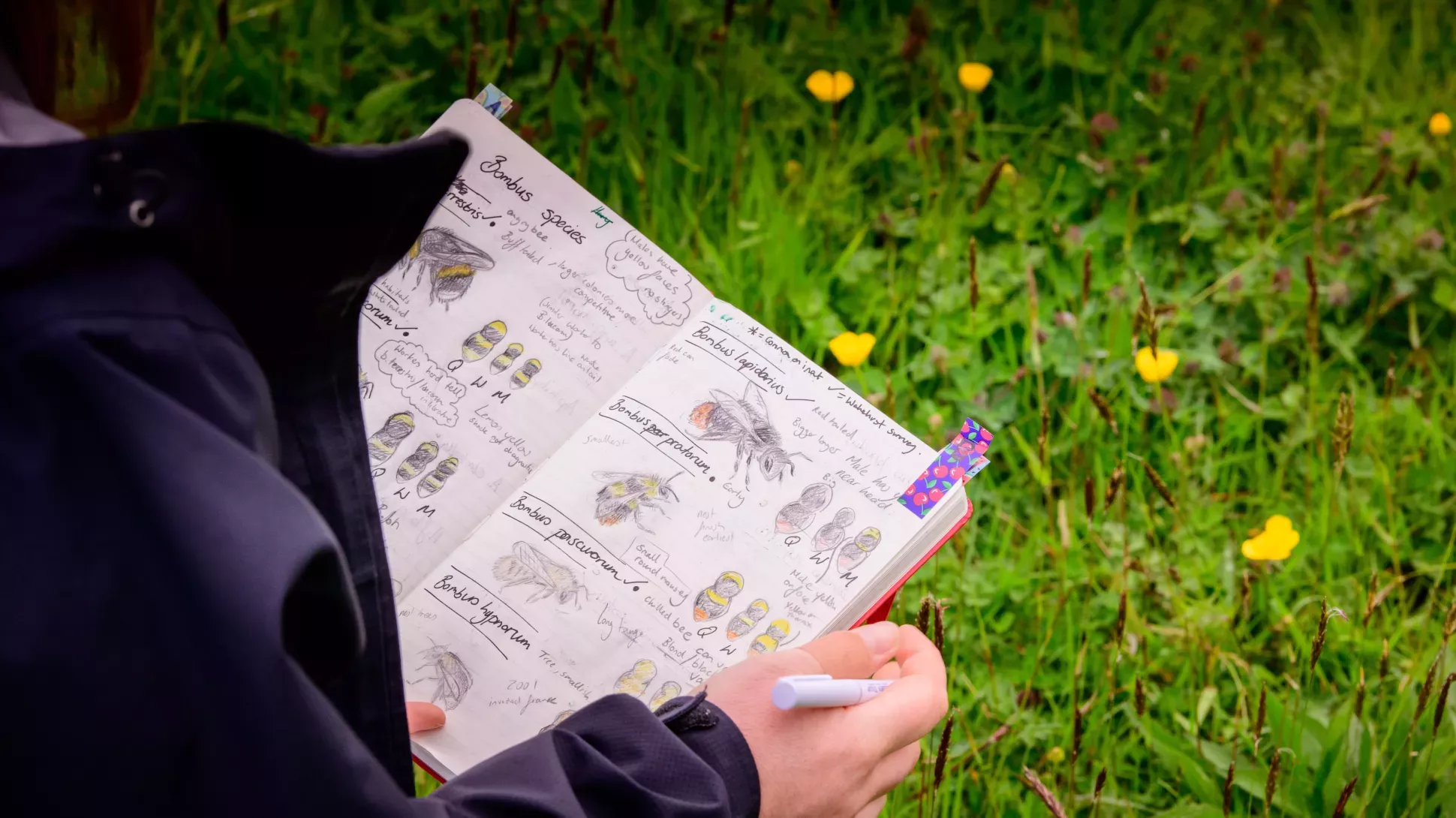16 August 2022
The American Prairie: One year on
As our American Prairie returns to TV screens in Channel 5’s Kew Gardens: A Year in Bloom, take a look back on Wakehurst’s most ambitious horticultural project of the last decade

The story so far
The journey of our American Prairie began in 2019, when a group of Wakehurst horticulturalists travelled to North America.
Working with conservation partners in Illinois, including prairie expert Larry Weaner, the team hand-collected millions of wild seeds from native prairies, to be planted right here in Sussex.
First, the seeds were brought to the Millennium Seed Bank, where different species were mixed together to create the perfect blend, before being sown across the landscape in 2020.
A selection of seeds were kept in the nursery, nurtured by our expert team to create 50,000 plug plants, each hand-planted a year later.
When the first flowering came in the summer of 2021, the prairie was a blanket of yellow, dappled with pinks, purples and whites, home to pioneering plants Coreopsis and Rudbeckia. Though a surprise to some, we had to mow this base layer to prepare for our plug plants, an essential process to strengthen the landscape.
The stunning array of colour was filmed as part of Channel 5’s ‘Kew Gardens: A Year in Bloom’, making an appearance in episode 5. Tune in on 23 August or catch up on demand to meet the people behind the prairie and hear about the horticultural practices that help this landscape flourish.

Why an American Prairie?
The prairies of North America are one of the most endangered habitats in the world, with only 1% of these diverse ecosystems remaining.
Through this six-acre landscape at Wakehurst, we are helping to research and share our knowledge of this threatened ecosystem
As a champion of conservation, our prairie also serves as a reminder of the importance of biodiversity; our unique mix of plants co-exist together, reducing competition and benefiting wildlife.

A summer showstopper
Three years in the making, our American Prairie is at its peak this summer, a striking sea of gold.
Visitors will be transported to the Atlantic Coastal Plains, the tallgrass plains of a South Central Prairie and the grasslands of the Pacific Northwest.
The stunning landscape also acts as a bridge between the formal gardens, closest to the Mansion, and the wild landscape, which radiates across Wakehurst’s 535 acres.
This unique horticultural experiment also adds to the global experience at Wakehurst, as visitors can continue their journey across the Atlantic, into Horsebridge Wood. Home to impressive giant redwoods native to North America, this dramatic forest provides a stark contrast to the delicate beauty of the prairie.


The science behind the prairie
Far more than a beautiful landscape, our American Prairie also contributes to Wakehurst’s role as a living laboratory.
As part of our Nature Unlocked research project, Kew Scientists are using the prairie to investigate the benefits of native and non-native grassland for our pollinators. They’re mapping pollinator populations across Wakehurst, exploring which species help to support a good diversity of bees, wasps and hoverflies.
A team of scientists and volunteers are carrying out Flower Insect Time (FIT) counts, taking note of the pollinators they spot and which plant species they are drawn to.
Bringing any substantial number of non-native species into the UK comes with risks, so now MSc student Rafia is investigating the invasiveness of these species, by measuring their ‘seed rain’. She’s selected six key species and is studying their seed dispersal traits independently in the nursery, as well as out in the prairie landscape.
When faced with the challenges of climate change and biodiversity loss, these research projects help to outline how and why we can encourage biodiversity in the UK, for the benefit of plants and wildlife.

What’s next for the prairie?
In order to mimic the life cycle of a prairie, our own landscape will go through the natural stresses it would face in its native habitat.
As prairies develop, they are maintained by processes such as climate, grazing and fire, some of which we will recreate at Wakehurst.
In the future, the prairie will be subject to managed burning, to maintain plant and animal diversity and remove dead vegetation.
This stunning landscape will continue to evolve, transforming into a true spectacle at Wakehurst.


